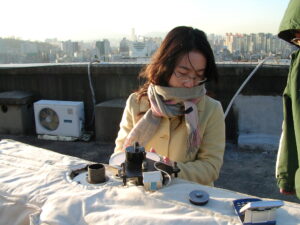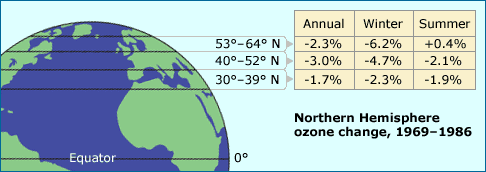Evidence for ozone depletion over the Poles was piling up — but what about over the rest of the planet? Here, scientists encountered an apparent paradox. In the 1950s, measurement stations at various locations around the world had begun to track local ozone levels. Prior to the discovery of the Antarctic hole, researchers had analyzed the data from these stations many times and found no evidence for ozone depletion — which didn’t seem to square with recent evidence of Antarctic ozone depletion. Could these analyses of global ozone levels be trusted? To answer this question, NASA organized the Ozone Trends Panel in 1987. Composed of 150 scientists from around the world, the panel re-analyzed these ground-based ozone data sets using a new procedure and found an annual ozone loss of 1.7–3% in the Northern Hemisphere.

How could two interpretations of the same data have given different results — no ozone loss versus 1.7–3% ozone loss? As with the atmospheric models discussed earlier, the explanation is in the details — the assumptions the analysts used to combine the data. The original analysis (the analysis that detected no problem with the ozone layer) assumed that ozone depletion was the same year round, lumped all the ozone measurements together, and averaged annually. The new analysis took into account additional evidence that suggested that ozone loss varies seasonally, and so considered data from different latitudes separately and averaged data for each month separately. Because the new procedure incorporated much more of the CFC-induced variation in ozone levels, it was able to detect an ozone loss that the original procedure could not.

The Ozone Trends Panel report, released in 1988, was the nail in the coffin for CFCs. It verified that ozone depletion existed worldwide and that chlorine chemicals, mainly CFCs, seemed to be the cause. Finally, the international community felt compelled to legislate a ban on CFCs. In 1990, policy makers from 93 countries gathered in London to sign a treaty, agreeing to phase-out CFCs by 2000 (with poorer countries allowed additional time to come up with alternatives). Over the next two years, as more results from scientific studies indicated increasing ozone depletion, the elimination date was moved up to 1996.
The challenge of squaring satellite and ground-based ozone measurements highlights the importance of analyzing and interpreting raw data. To learn more about this process, visit Digging into data.
